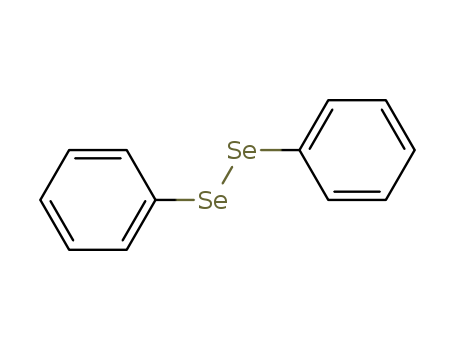10.3184/030823408X360355
The research describes a novel and efficient method for the one-pot synthesis of aryl vinyl ethers using β-phenylselenoethanol as a reagent. The purpose of the study was to develop a more experimentally simple and efficient methodology for the preparation of aryl vinyl ethers, which are key intermediates in various synthetic applications and polymeric materials. The researchers achieved this through a two-step process involving the Mitsunobu reaction of β-phenylselenoethanol with phenols, followed by oxidation-elimination with 30% hydrogen peroxide. The method concluded with good yields (85–90%) and had the advantages of mild reaction conditions and convenient manipulation. Key chemicals used in the process included β-phenylselenoethanol, phenols, diphenyl diselenide, sodium hydride, HMPA, 2-chloroethanol, and various phenolic substrates with different substituents. The study also reported the recovery of diphenyl diselenide in a 60% yield through the addition of hydrazine monohydrate to the aqueous extract containing benzeneseleninic acid.
10.1080/00397919408011508
The research focuses on the reductive removal of phenylseleno groups from α-phenylseleno carbonyl compounds using tellurolate anions. The purpose of this study was to develop a method for selectively removing organoselenium moieties from these compounds, which are often used as synthetic intermediates, due to their instability. The researchers concluded that tellurium reagents could effectively remove the phenylseleno group from a variety of α-phenylseleno carboxylic acids, esters, ketones, and malonic esters, but emphasized that the choice of reaction conditions and reagents was crucial for obtaining the desired product. Key chemicals used in the process included dithienylditelluride, sodium borohydride, sodium hydride, dimethylformamide (DMF), and diphenyl diselenide, among others.
10.1002/adsc.201900142
The research explores the synthesis of densely substituted 4H-chalcogenochromenes from organochalcogen propargylamines in the presence of diaryl dichalcogenides, using iron(III) as a promoter. The study also investigates subsequent C2-functionalization with electrophiles and potassium trifluoroborate salts via Suzuki-Miyaura coupling reactions. Key chemicals involved in this research include organochalcogen propargylamines, diaryl dichalcogenides such as diphenyl diselenide, iron(III) chloride (FeCl3), nitromethane, and various electrophiles like n-butyllithium and different potassium aryl trifluoroborate salts. The research demonstrates a modular and operationally simple route to 4H-chalcogenochromenes, highlighting the potential for further functionalization of these compounds through chemoselective processes.
10.1055/s-2004-832827
The study explores a phenylselenofluorination method for alkenes and alkynes using difluoroiodotoluene (DFIT) and diphenyldiselenide (PhSeSePh). DFIT, acting as a fluorinating agent, oxidizes PhSeSePh to generate an electrophilic phenylselenium species in situ. This species then reacts with alkenes and internal alkynes to form phenylselenofluorinated products. The method is efficient and mild, achieving high stereo- and regioselectivity. Various alkenes and internal alkynes were successfully transformed into the desired products, with yields ranging from 58% to 92%. Terminal alkynes, however, only underwent hydrogen substitution by the PhSe group, indicating that their reactivity is independent of the hypervalent iodine structure used. The study demonstrates a promising approach for introducing fluorine atoms into organic molecules, with potential applications in the synthesis of complex natural products and bioactive compounds.



 T,
T,  N
N


